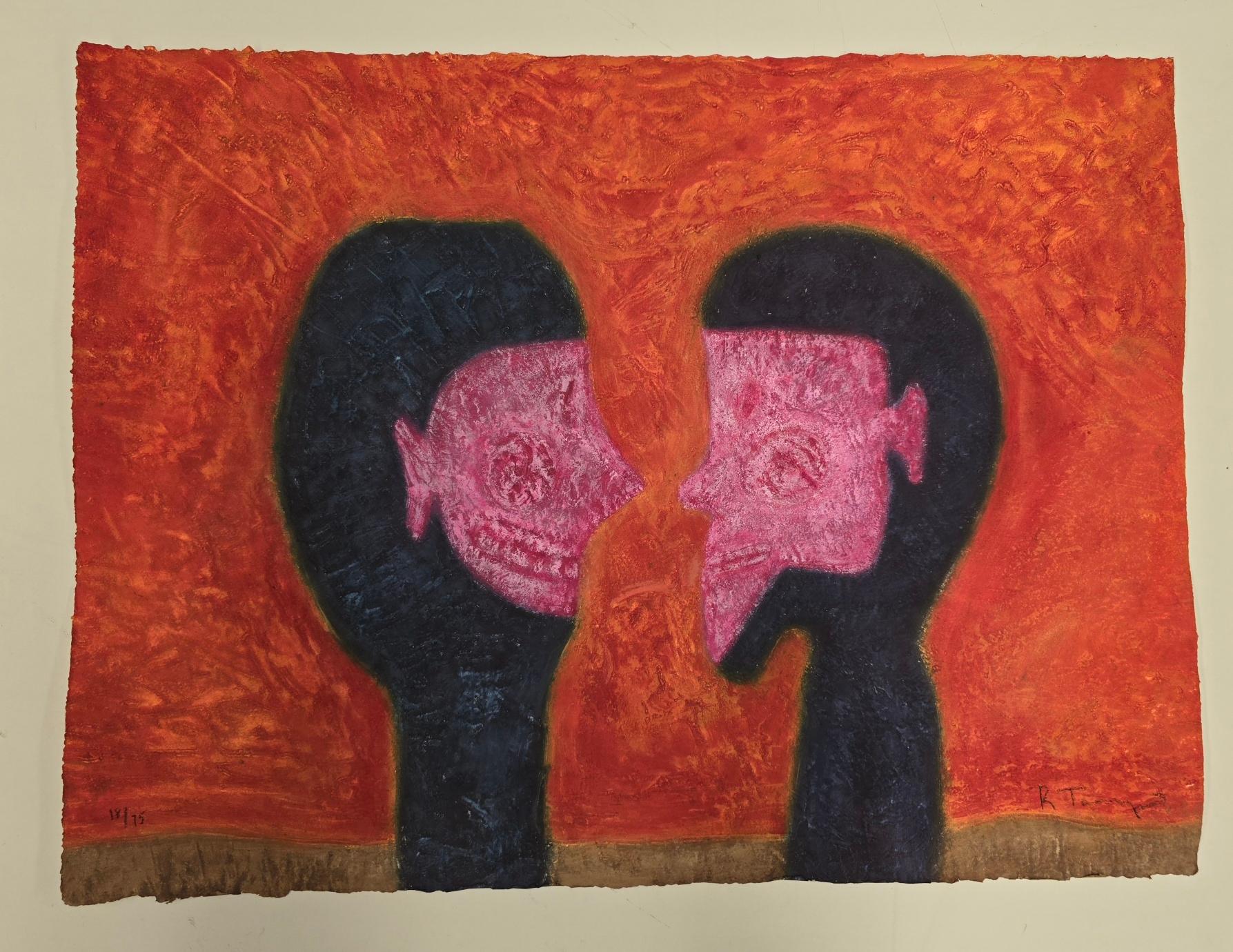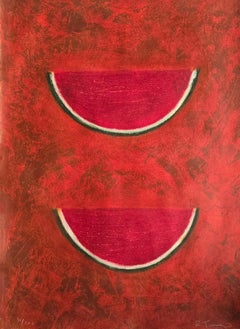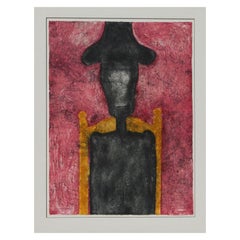Questions & Answers
Our trusted network of 1stDibs sellers answer common questions
How many paintings did Rufino Tamayo have?
1 Answer

Mexican painter Rufino Tamayo had over 1300 oil paintings. He also worked in a variety of other mediums, but most of his work was done with vibrantly colored oil paint and this is the highlight of his legacy. Browse an array of authentic Rufino Tamayo pieces and prints on 1stDibs.
1stDibs ExpertApril 5, 2022
Related Questions
- What type of art did Rufino Tamayo paint?1 Answer
- Who painted the Jesus painting?1 Answer
- How many paintings did Michelangelo paint?1 Answer
- How many paintings did Modigliani paint?1 Answer
- Which famous painting was painted on cardboard?1 Answer
Shop for Rufino Tamayo Art on 1stDibs
Affiche avant Lettre (Mujer Suite), 1969 Lithograph by Rufino Tamayo
By Rufino Tamayo
Located in Long Island City, NY
Affiche avant Lettre (Mujer Suite)
Rufino Tamayo
Mexican (1899–1991)
Date: 1969
Lithograph Poster, signed in the plate
Size: 32.5 x 24 in. (82.55 x 60.96 cm)
Category
1960s Prints and Multiples
Materials
Lithograph
Sandias, Surrealist Mixographia by Rufino Tamayo
By Rufino Tamayo
Located in Long Island City, NY
Rufino Tamayo, Mexican (1899 - 1991) - Sandias, Year: 1977, Medium: Mixographia, signed and numbered in crayon, Edition: 31/100, Size: 29 x 20.75 in. (73.66 x 52.71 cm), Publishe...
Category
1970s Surrealist Still-life Prints
Materials
Etching
Rufino Tamayo Mixografia “Hombre En Negro, ” circa 1976
By Rufino Tamayo
Located in Phoenix, AZ
Mixografia “Man in Black” by well-known Mexico artist Rufino Tamayo (1891-1991).
Signed “R. Tamayo” in pencil lower right. Numbered in pencil “60/140" lower left.
In excellent unfram...
Category
Late 20th Century Abstract Prints
Materials
Other Medium
Femme Souriante
By Rufino Tamayo
Located in Warren, NJ
in excellent condition signed and numbered
Category
1960s Prints and Multiples
Materials
Paper
Mascara Roja
By Rufino Tamayo
Located in San Francisco, CA
This artwork titled "Mascara Roja" 1969 is an original colors lithograph on B.F.K. Rives paper by renown Mexican artist Rufino Tamayo, 1899-1991. It is hand signed and inscribed H.C. (Hors Commerce) in pencil by the artist. The image size is 21 x 27.25 inches, framed size is 37.25 x 42 inches. Published by Touchtone Publisher, New York, printed by Ateliers Desjobert, Paris. Referenced and pictured in the artist's catalogue raisonne by Pereda, plate #124. Custom framed in a wooden gold leaf frame, with gold and red spacer and fabric matting. It is in excellent condition.
About the artist:
A native of Oaxaca in Southern Mexico, Rufino Tamayo's father was a shoemaker, and his mother a seamstress. Some accounts state that he was descended from Zapotec Indians, but he was actually 'mestizo' - of mixed indigenous/European ancestry. (Santa Barbara Museum of Art). He began painting at age 11. Orphaned at the age of 12, Tamayo moved to Mexico City, where he was raised by his maternal aunt who owned a wholesale fruit business.
In 1917, he entered the San Carlos Academy of Fine Arts, but left soon after to pursue independent study. Four years later, Tamayo was appointed the head designer of the department of ethnographic drawings at the National Museum of Archaeology in Mexico City. There he was surrounded by pre-Colombian objects, an aesthetic inspiration that would play a pivotal role in his life. In his own work, Tamayo integrated the forms and tones of pre-Columbian ceramics into his early still lives and portraits of Mexican men and women.
In the early 1920s he also taught art classes in Mexico City's public schools. Despite his involvement in Mexican history, he did not subscribe to the idea of art as nationalistic propaganda. Modern Mexican art at that time was dominated by 'The Three Great Ones' : Diego Rivera, Jose Clemente Orozco, and David Alfaro Siqueros, but Tamayo began to be noted as someone 'new' and different' for his blending of the aesthetics of post Revolutionary Mexico with the vanguard artists of Europe and the United States.
After the Mexican Revolution, he focused on creating his own identity in his work, expressing what he thought was the traditional Mexico, and refusing to follow the political trends of his contemporary artists. This caused some to see him as a 'traitor' to the political cause, and he felt it difficult to freely express himself in his art. As a result, he decided to leave Mexico in 1926 and move to New York, along with his friend, the composer Carlos Chavez. The first exhibition of Tamayo's work in the United States was held at the Weyhe Gallery, New York, in that same year. The show was successful, and Tamayo was praised for his 'authentic' status as a Mexican of 'indigenous heritage', and for his internationally appealing Modernist aesthetic. (Santa Barbara Museum of Art).
Throughout the late thirties and early forties New York's Valentine Gallery gave him shows. For nine years, beginning in 1938, he taught at the Dalton School in New York.
In 1929, some health problems led him to return to Mexico for treatment. While there he took a series of teaching jobs. During this period he became romantically involved with the artist Maria Izquierdo...
Category
Mid-20th Century Modern Figurative Prints
Materials
Lithograph
"Hombre contemplando la luna" original etching
By Rufino Tamayo
Located in Henderson, NV
Medium: original etching and aquatint. Printed in 1947 on Velin de Hollande paper and published in New York by the Quadrangle Press as the frontispiece of the deluxe edition of Rober...
Category
1940s Surrealist Prints and Multiples
Materials
Etching, Aquatint

